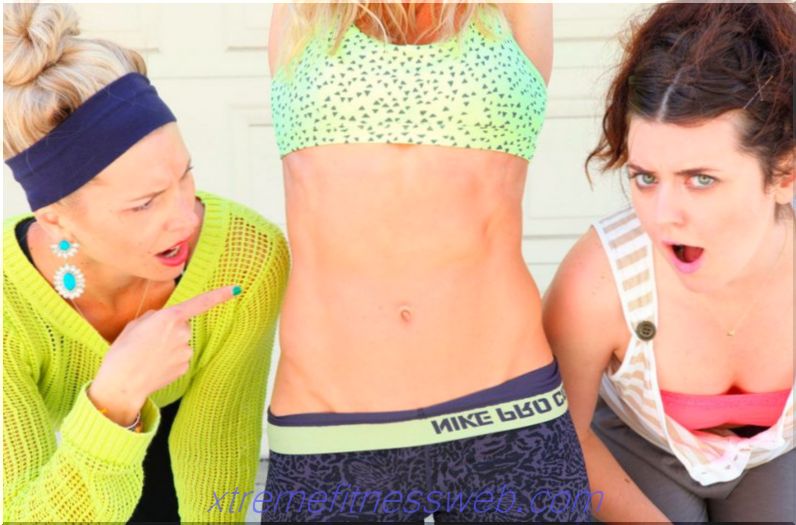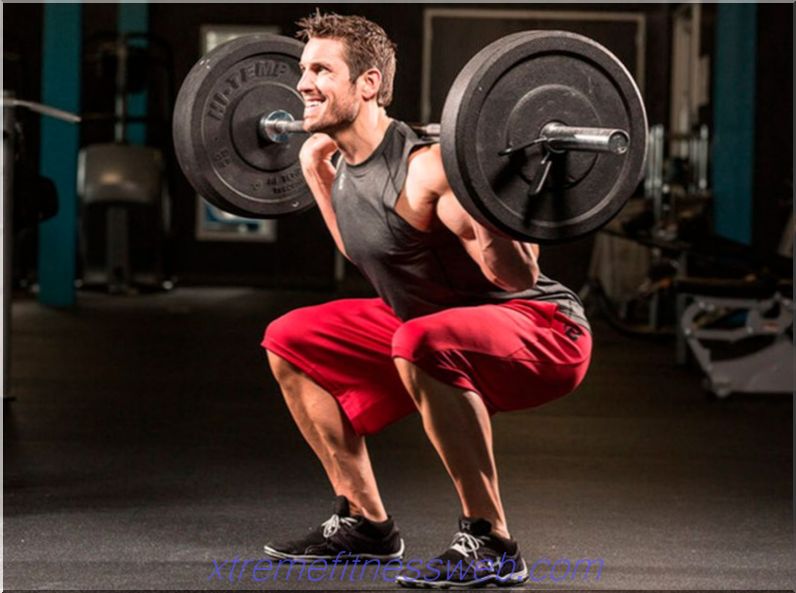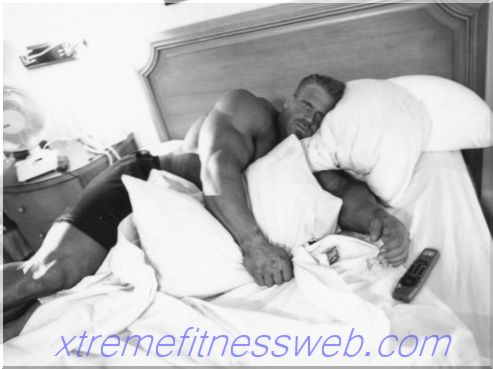- What it is
- What muscles work in goblet squat
- When applied
- Beginner Bodybuilder Training
- Home workouts
- Women's fitness and bodybuilding
- Execution technique
- Technical errors

Goblet squats or cup squats are a basic exercise for the legs, buttocks, and abs. This movement involves the entire body, the hands are working statically. But the goblet's value is not only that. Exercise is the only option in which it is possible to learn how to work with a relatively straight back and in full amplitude. The movement is used in practice to "cure" the lack of novice, and teach them how to work properly with the knees, ankles and back. In fitness, movement is shown even to the parallel, but this option is performed only by those whose knees do not bend for anatomical reasons.
Content
- 1 What is it
- 2 What muscles work in goblet squat
- 3 When applied
- 4 Training novice bodybuilders
- 5 Home Workouts
- 6 Women's fitness and bodybuilding
- 7 Technique
- 7.1 Classic
- 7.2 Option in "sumo"
- 8 Technical errors
What it is

Goblet in translation from English means "cup". The movements of the athlete’s hands resemble holding the cup in front of him when he tries to perform a squat. Goblets are common not only in strength, but also in functional training as a movement for the core, buttocks and legs.
As weights use:
- 1 dumbbell
- 1 or 2 weights;
- Damn from the bar;
- Sandbug;
- Handy weights - water and sand bottles
The advantage of the exercise is its versatility. To study the legs and buttocks, you do not need to go to the gym. Keeping weight in front of you teaches you how to properly position your chest and body. Exercise increases mobility of the knee and hip joints, and helps to get rid of posture disorders in the squat.
Exercise is available for beginners, as the weight can be selected minimum. Various variations are possible to complicate the movement - the addition of a rubber shock absorber under the knees or on the hips will help to include the buttocks in the work.
What muscles work in goblet squat

The main drivers in the exercise are:
- Hip muscles - biceps and quadriceps;
- Soleus muscle of the leg;
- Buttock
- As stabilizers of the athlete's body weight and weights are:
- Rectus abdominis muscle;
- Arm biceps, brachialisis, front deltas
The movement can also cause stabilization due to the tension of the trapezius muscles, but this is undesirable.
When applied
It is difficult to imagine a goblet as the main exercise for a powerlifter or bodybuilder. The weight of the weights is negligible, "pumping" large legs will not work. Exercise is used as an auxiliary in crossfit and kettlebell lifting. And with his help, beginners are taught squatting techniques.
Goblets can become the main movement if they are performed with additional weights tied to the belt, but this is rarely used in practice.
Beginner Bodybuilder Training

If you immediately put a beginner under the bar, there is a big risk that he will not understand the mechanics of movement. The skill of holding the back vertically, and lifting at the expense of the hips, and not by stretching the buttocks back, comes with experience. Front squat and goblet in this regard are more promising. They help the athlete get rid of mistakes, since it is simply not possible to stand up by lifting the buttocks while keeping the weight in front of you.
The second important skill that is obtained with goblet squat is keeping the press tense and breathing into the front abdominal wall. The third is the movement due to the direction of the knees to the noses and their bending, and not due to the forward inclination of the body.
Important: training for a squat with a barbell begins after the athlete is trained to technically correctly perform the movement in 10-12 repetitions with a weight or dumbbell. It is not necessary to delay this moment, since in the future the athlete may have problems with the motor stereotype.
Home workouts

The reasons why a person chooses home training are free and convenient. No need to go to the other end of the city, pay for the hall. Training at home is as effective as a person knows the technique of exercises, and can independently perform them, having sufficient self-discipline.
At home, you need to perform a large amount of training load, since only in this way you can get an active effect on the muscles. But training of such a plan will only increase strength endurance, and not muscle volume.
Women's fitness and bodybuilding

Exercise will help tone muscles and increase overall stamina. In scientifically based methodological schemes for women's fitness, a goblet is given for 1-2 introductory months, and after that the client performs already more difficult exercises, for example, leg presses and squats with a barbell.
But in women's fitness, volume often prevails over intensity, so many remain at a level where the goblet is performed as the main exercise. This is not optimal, but there is a place to be in the practice of working with clients who do not want to have volumetric muscles, and who need just a tone.
Practice shows that a goblet can be performed with a weight of up to half of its own body weight, but most often, girls stop at a third of their own weight. This allows you to get an adequate load on the muscles, but does not lead to their significant hypertrophy.
Women's training for many is built around pumping the buttocks. Most do not want to have developed quadriceps at the same time. Deep cup squat is able to maximize the involvement of the buttocks in the work.
Goblets in women's fitness are also used as an exercise for preliminary fatigue of quadriceps. This idea does not have a scientific basis, but many believe that if you first perform several sets of goblet-squats, and then do heavy exercises on the buttocks, the quadriceps will magically shut down from work. In fact, it all depends on the selection of heavy exercises. If they mean classic squat with a barbell, nothing will come of it. Similarly with other types - squat in a sumo, with a dumbbell, and in a hack machine. For normal harmonious development of the body, it is advisable to apply the technique in combination with traction.
Execution technique
Technically correct exercise is possible only with adequate weight. Kettlebell fitness experts recommend that women start with a weight of 8 kg, men - 16 kg. Smaller shells do not make sense to use, since with them the core cannot be turned on.
Classic version

The most difficult thing here is taking the shell into the rack. A tilt is performed due to flexion in the hip joint, and the athlete grabs a kettlebell or dumbbell with both hands on both sides. Then, due to extension in the pelvis with slightly bent knees, the weight is located on the chest. It’s important to “substitute” the chest under the weight so that it weights the center of the body, and not just holds it with your hands. During taking the back is tense, the shoulder blades are brought to the spine, the press is tightened.
After taking stabilization follows. Bend your knees right away and sit down. The athlete must stabilize the center of the body so that the weight lies rigidly on his chest and does not slip. The point is to redistribute the weight between the body and hands so that the athlete does not overstrain and does not squeeze the weight with his hands. This is an important skill, it is practiced separately. If it is not worked out, there will be no physical opportunity to take the normal weight of the load on the chest.
After stabilizing the weight, you need to place your feet so that the heels are slightly wider than the pelvic bones, about the level of the average delta. Socks of the feet are spread to the sides, as it is convenient. The athlete bends the knee and hip joints, and at the same time leads the knees to the toes.
Important: you can often see how coaches reward their clients with a technical error - tilting the body forward. This is a rather traumatic position for the knee, and so no special benefits will be obtained. In "popular beliefs", such a squat with a slope and in a malnourished take root as a "female". But in reality, it’s just technically incorrect, the quadriceps works fine even with an incomplete amplitude in the knee joint, despite the fact that many try to “turn it off” due to this position.
The bottom point of the squat is the point at which the pelvis drops below the knee. Ideally, the thigh is in full contact with the lower leg. Achieving such a depth is only necessary for those athletes who can avoid "pecking, " that is, turning the pelvis at the bottom of the squat in the opposite direction.
This option allows you to fully stretch the gluteal muscles and start from the bottom due to them. The buttocks contract, the impulse is transmitted to the muscles of the hips, the knee and hip joints are unbent. The goblet should be one, single movement, in which there is no place for body tilts, or for the pelvis to go up due to active contraction of the back muscles and pushing the hips up.
The meaning of the exercise is to keep the projectile in front of the chest all the time. Other options are not allowed.
Option in the sumo

Goblet squat in sumo means the same movement with a very wide setting of feet. What is not written about its benefits. Some people believe that the quadriceps are turned off this way, but in fact, this option does not turn off the quadra, but simply leads to the fact that the hip muscles are included in the work. Therefore, those who are afraid of pumping themselves up should pay attention to this valuable information.
The sumo option requires considerable flexibility and mobility in the hip joint. The athlete becomes in a wide stance, knees look almost to the sides, the feet are greatly deployed. The movement of the knee joint goes along the toes, that is, not in the pli, but in a slightly smaller angle. The buttocks are preferably lowered below the knee joint.
The movement is considered useful for the development of the middle gluteal muscle, since weight ejection occurs due to the reduction of this particular muscle.
Important: if there is pain in the joints after performing the movement, sumo should be discarded.
Technical errors

Typical mistakes in a goblet squat are a lack of time and a stall forward. But there may be more variations in incorrect execution of the movement:
- Some athletes hold their weights almost on outstretched arms, overloading their ligaments;
- Others descend in parallel, although nothing prevents to lower it below;
- Squatting with feet parallel to each other is also a mistake. This overloads both the ligaments of the knee joint and the pelvis;
- An unnatural, over anatomical eversion of socks to the sides can lead to injuries of the knees and pelvis;
- Sudden movements, "jumps" from the bottom point are not desirable;
- It is not recommended to relax the press, but if the retention occurs correctly, it will not work to relax.
Women often “save” on the weight of dumbbells, do not take weights that could be heavy enough for them, and therefore do not get results from squats. With independent classes, mistakes with planning are likely - the transformation of strength training into aerobic and vice versa. If the goblet is so easy to perform that you can make 30 or more movements, you should take a dumbbell or a heavier weight.
You can progress in the exercise by loading the shoulders with rubber or using a rubber band on your knees or higher.







